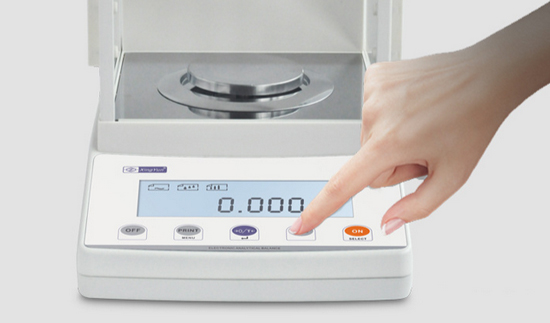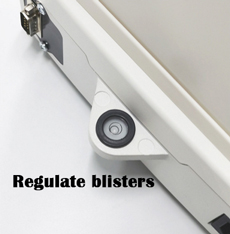Electronic Analytical Balance Troubleshooting
Electronic analytical balances are precision instruments essential for accurate measurements in laboratories. However, like any equipment, they may encounter issues over time. In this blog, we will explore common problems that users may encounter with electronic analytical balances and provide guidance on how to troubleshoot and resolve these issues effectively. ATO.com gives you detailed answers.
Trouble analysis and troubleshooting
Inaccurate Weighing
To diagnose this issue, observe whether the internal code values are stable. Check for any friction in different parts of the sensor. Verify the stability of the voltage supply. Inspect the operational amplifier (op-amp) circuit. Test the balance by placing weights on all four corners of the weighing pan to ensure even distribution. Refer to the user manual for further instrument-specific troubleshooting or weight calibration.
Failure to Return to Zero After Removing Weight
Check if the sensor's output signal falls within the standard range (A/D total amplification code / internal code range / zero point range). If the signal is not within the standard range, adjust the sensor's adjustable resistor to bring the signal within the standard range. If compensation is not possible, inspect the sensor for issues. If the sensor output is normal and the balance is stable, look for faults in the amplification and A/D conversion circuits, following the circuit principles for step-by-step troubleshooting to resolve the issue.

Failure to Power On
First, rule out issues related to fuses, power switches, power cables, and voltage selection switches. Check for the presence of AC voltage input and output from the transformer. If the instrument has a battery, remove it and power on using AC power to check if the issue is due to low battery voltage. Next, check the rectification circuit, voltage regulation circuit, and display driver circuit for anomalies. If everything is in order, inspect the processor and associated circuits for damage.
Display Showing Garbled Characters
To diagnose this issue, replace the original display circuit with a known working one. If the new display functions correctly, it indicates a problem with the display circuit. If the issue persists, check for faults in the driver circuit. Finally, verify if the processor's output pins for display are within the expected output range.
Unresponsive Buttons
Test with new buttons. If the new buttons work properly, the issue may be due to poor button contacts. Inspect the circuitry connecting the buttons to the CPU for open circuits or soldering issues. Check for any poor contacts on the button contacts. Examine diodes, resistors, and other components in the button-to-CPU circuit for short circuits or open circuits.
Unable to Reach Full Load
This issue is similar to the inability to return to zero and is likely caused by a change in the small signal input range. Follow the steps used for diagnosing the inability to return to zero. If the problem remains unresolved, check the power supply, A/D circuit, and sensor output.
Pointer Fluctuation
When the balance beam is lifted, if the distance between the pivot knife and the knife rest differs in front and back, it may result in pointer fluctuations upon balancing. To address this, loosen the screw in front of the left arm of the balance beam and manually adjust the height of the small support pillar until the pointer no longer fluctuates when the balance is opened.
Maintenance and Care
- Place the balance on a stable workbench to avoid vibrations, airflow, and direct sunlight exposure.
- Before use, adjust the spirit level bubble to the center position.
- Preheat the electronic balance as per the instructions in the user manual.
- When weighing volatile or corrosive materials, use airtight containers to prevent corrosion and damage to the electronic balance.
- Regularly perform self-calibration or periodic external calibration to ensure the balance is in optimal condition.
- If the electronic balance experiences a malfunction, seek timely repair and avoid using it when it's not functioning properly.
- Do not overload the balance during operation to prevent damage.
- If the electronic balance will not be used for an extended period, consider temporary storage.
Maintenance and Care of Balance Weights:
- Analytical balances should undergo regular calibration as per the regulations of the metrology department. They should be stored and maintained by a designated individual responsible for upkeep.
- Place a desiccant inside the balance; silica gel that changes color is commonly used and should be replaced periodically.
- Do not exceed the maximum load capacity of the balance during weighing.
Important Notes:
Since balance weights typically have high precision and stringent environmental and operational requirements, it's crucial to be aware of certain considerations during daily use to prolong the lifespan of electronic analytical balances.
- Avoid placing balance weights on side tables beneath air conditioners. If the electronic analytical balance has been moved, it must be re-leveled. Ensure that the balance's metrological performance is thoroughly checked and accurate before use.
- When weighing hygroscopic, volatile, or corrosive materials, secure the container's lid tightly during weighing. Try to complete the process quickly and prevent any material, especially corrosive substances, from spilling onto the weighing pan or base. After weighing, promptly remove the material from the balance and maintain cleanliness in the weighing area.
- For a single experiment, use the same balance to avoid introducing errors due to variations in measurements.
Tips
- Place the electronic balance on a stable work surface to avoid vibrations, air currents, and direct sunlight exposure.
- Before use, adjust the spirit level bubble to the center position.
- Preheat the electronic balance as per the instructions in the user manual.
- When weighing volatile or corrosive substances, use airtight containers to prevent corrosion and damage to the electronic balance.
- Perform regular self-calibration or periodic external calibration to ensure the balance is in optimal condition.
- If the electronic balance experiences a malfunction, promptly have it serviced; avoid using it when it's not functioning properly.
- Do not overload the balance during operation to prevent damage.
- If the electronic balance will not be used for an extended period, consider temporary storage.
Maintaining and troubleshooting electronic analytical balances is crucial to ensuring the accuracy of measurements in the laboratory. By addressing these common issues and following the recommended troubleshooting steps, you can keep your electronic analytical balance in optimal working condition and continue to rely on it for precise measurements in your research and experiments.

